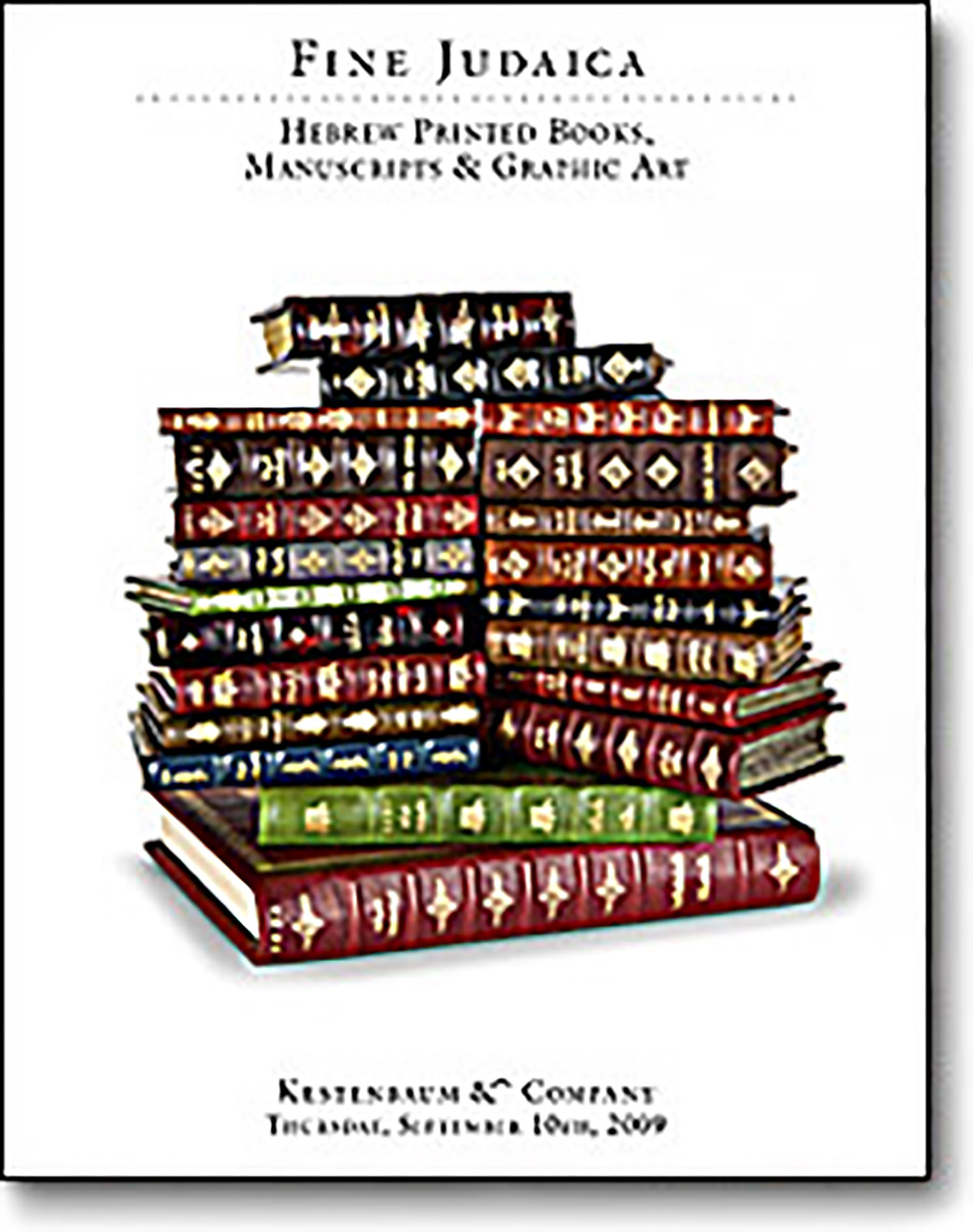Hilchoth Rav Alfas [Rabbinic Code]. With commentaries of Rashi, R. Jonah Gerondi, R. Nissim Gerondi, R. Jonathan Hakohen of Lunel, R. Joseph Habiba (Nimukei Yoseph), R. Zerachyah Halevi (Ba’al ha-Ma’or), and Nachmanides (Milchamoth Hashem).

AUCTION 46 |
Thursday, September 10th,
2009 at 1:00
Fine Judaica: Hebrew Printed Books, Manuscripts, & Graphic Art
Lot 14
ALFASI, ISAAC BEN JACOB (RI”F).
Hilchoth Rav Alfas [Rabbinic Code]. With commentaries of Rashi, R. Jonah Gerondi, R. Nissim Gerondi, R. Jonathan Hakohen of Lunel, R. Joseph Habiba (Nimukei Yoseph), R. Zerachyah Halevi (Ba’al ha-Ma’or), and Nachmanides (Milchamoth Hashem).
Sabbioneta: Tobias Foa 1554-5
Est: $4,000 - $6,000
PRICE REALIZED $3,200
SIX VOLUMES OF THE RARE SABBIONETA EDITION OF THE RI". F.
Isaac Alfasi brought the Geonic period to a close. His fame rests on this great work, whose purpose was to provide a comprehensive compendium for ready reference to facilitate Talmud study. The work remains an important and widely admired code, indeed Joseph Karo regarded Alfasi’s scholarship with utmost respect and determined the laws of his Shulchan Aruch upon his authority. Between the 16th and 19th centuries when the printing of the Talmud was banned in Italy, Alfasi’s work was expressly exempt and thus became a principal subject of study among Italian Jews. See Heller, The Sixteenth Century Hebrew Book, I, pp. 394-5.
